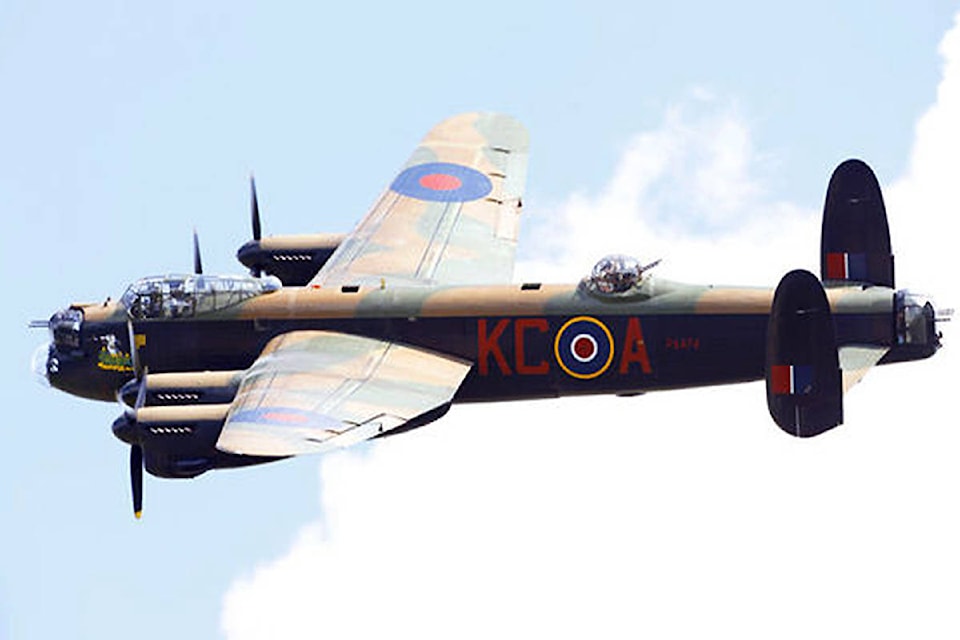There were a total of 7,377 Avro Lancaster bombers built during WWII but only two of the iconic heavy bombers remain airworthy and only 17 of the aircraft remain in complete form.
A total of 3,736 of the aircraft were lost during the war while performing bombing raids into Nazi Germany.
“When one considers that the crews knew the fatality rates of those missions and the horrors of the night flights and search lights…its remarkable. These men got into these aircraft knowing there was a good chance they wouldn’t be coming back,”said John Lewis, the president of the B.C. Aviation Museum (BCAM) in North Saanich.
“It’s one of the reasons we were so keen on getting one here. It’s an important part of not only aviation history, but of our collective history as a nation.”
Now, dependant upon the approval of Toronto City Council on July 23, one of the last surviving Lancasters may, in fact, be heading to the BCAM.
The plane in question, the Lancaster FM104, was one of 400 built in Canada and flown to Europe as part of the 248 Squadron in 1944. But FM104 never flew any bombing missions before the war’s end. It returned to Canada in 1945 and, for the next 20 years, it flew as part of the Maritime Air Command of the Royal Canadian Air Force, performing patrols and search and rescue functions.
When it was finally retired in 1965, the Royal Canadian Air Force Association purchased the plane and donated it to the City of Toronto as a memorial. It was placed upon a plinth in Coronation Park where it sat, exposed to the elements, up until 1999 when it was removed and displayed at the Canadian Air and Space Museum at Downsview Park.
It was later dismantled and for the past seven years has been stored, in pieces, at the Edenvale Aviation Heritage Foundation in Stayner, Ont.
Notwithstanding that the aircraft has effectively been removed from any sort of public access for the better part of a decade, and that the only initial offer made to take the aircraft was by the Canadian Warplane Heritage Museum (CWHM) in Hamilton, Ont., near Toronto, who proposed that it would be used as parts for the one airworthy Lancaster already in the museum’s collection, the offer from the BCAM to take and restore Lancaster FM104 to flying condition was met with outrage by some Torontonians.
“When the Economic Development Committee of Toronto City Council first met in April to review our request they were met with an emotional appeal from a group that had formed to keep the plane in Toronto,” explained Lewis.
Based on that appeal, they deferred their decision for three months while the alternative proposals were considered.”
Those alternative proposals came from a number of groups, but chief among them was #SaveLancasterFM104, a Toronto group that has since acknowledged that they do not have the resources needed for the restoration of the aircraft.
A revised proposal from the CWHM and one from the foundation in Stayner were similarly found to be less appropriate than the BCAM proposal.
“The whole thing is still up in the air (no pun intended) until Toronto City Council votes to ratify the recommendation of their Economic Development Committee who voted to approve the plane coming to the BCAM,” said Lewis.
They do not, as a rule, overturn the recommendations of their own committees, but until that vote is cast, we simply do not know for certain.”
Assuming that the move to the BCAM is approved, it would take several months to ship the component pieces of Lancaster FM104 to the Saanich Peninsula.
“We may ship it by road or by rail, but are still exploring our options. But regardless, we would hope to have much of it here in a few months and all of it by year’s end,” said Lewis.
Once in North Saanich, the real work of restoration would begin.
Lewis explained that none of the work would be done in a way that would compromise the end goal of having the Lancaster as an airworthy part of the BCAM collection.
“The work will be done by a collection of skilled volunteers and Victoria Air Maintenance. That’s the group that generously helped in restoring the last deHavilland Mosquito B.35. That’s another WWII plane, and the work that was done there was amazing.”
Even with the help of skilled professionals and volunteers, Lewis estimates that the full restoration of the Lancaster may take as long as 10 years.
“You have to do this carefully and with a view to seeing it airborne once again. That’s the real goal.”
